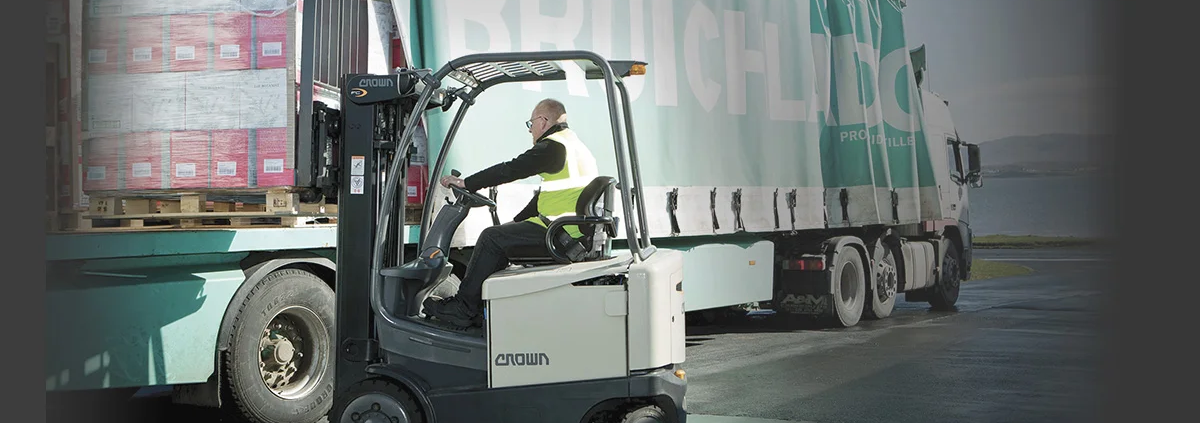Electric Forklift Batteries: Types, Performance, and How to Choose the Right Power Solution
Introduction
Electric forklifts have become the backbone of modern warehouses, distribution centers, and manufacturing facilities. Unlike internal combustion models, electric forklifts rely entirely on their batteries to power traction, hydraulics, and onboard systems. This makes the battery not just a component, but the very heart of the machine. Choosing the right electric forklift battery directly impacts productivity, safety, and long-term operating costs.
This article takes a deep dive into electric forklift batteries—their types, performance factors, cost implications, and how to select the right option for your fleet.
What Are Electric Forklift Batteries?
An electric forklift battery is a large, rechargeable energy storage unit that powers both movement and lifting functions. Besides delivering energy, the battery also acts as a counterweight, ensuring forklift stability.
- Voltage ranges: Common configurations include 24V, 36V, 48V, 72V, and 80V.
- Capacity: Measured in ampere-hours (Ah), capacity determines how long a forklift can run on a single charge.
- Weight: Battery weight is factored into the forklift’s balance and load-bearing capabilities.
Main Types of Electric Forklift Batteries
Lead-Acid Batteries
The traditional choice for decades, lead-acid batteries are still widely used.
- Advantages: Lower upfront cost, established supply chain, standard sizes.
- Limitations: Require regular watering, slow charging (6–8 hours), shorter lifespan (~1,500 cycles).
Lithium-Ion Batteries
Lithium-ion, particularly lithium iron phosphate (LiFePO4), has rapidly gained popularity in recent years.
- Advantages: Fast charging (1–2 hours), maintenance-free, long lifespan (3,000–5,000 cycles), higher energy efficiency.
- Limitations: Higher initial cost, requires built-in battery management system (BMS).
Other Options (Briefly)
Fuel cells and sodium-ion are emerging, but adoption remains niche compared to lead-acid and lithium-ion.
Key Comparison: Lead Acid vs. Lithium-Ion
| Feature | Lead Acid | Lithium-Ion |
| Cycle life | 1,000–1,500 cycles | 3,000–5,000+ cycles |
| Charging time | 6–8 hours | 1–2 hours (opportunity charging) |
| Maintenance | Regular watering, equalization | Maintenance-free |
| Safety | Risk of acid spills, off-gassing | Integrated BMS |
| Upfront cost | Lower | Higher |
| Total cost of ownership | Higher (due to downtime and maintenance) | Lower over lifecycle |
Performance Factors to Consider
When choosing an electric forklift battery, decision-makers should evaluate:
- Battery capacity and runtime – Align Ah rating with daily workload.
- Charging strategy – Overnight charging, fast charging, or battery swapping.
- Maintenance needs – Lead-acid requires watering and inspections; lithium requires monitoring BMS data.
- Safety and environment – Ventilation, thermal stability, spill prevention.
- ROI and lifecycle cost – Consider downtime reduction and productivity gains.
Industry Applications & Use Cases
- Cold storage & food logistics → Lithium performs better at low temperatures.
- Multi-shift warehouses → Lithium supports opportunity charging between shifts.
- Light-duty operations → Lead-acid remains cost-effective for occasional use.
- Ports and manufacturing → High-capacity lithium packs are preferred for continuous heavy-duty work.
How to Choose the Right Electric Forklift Battery
- Check your forklift’s specifications (voltage, capacity, weight).
- Estimate daily usage hours and charging opportunities.
- Compare upfront cost vs. total cost of ownership.
- Evaluate safety requirements and compliance standards.
- Plan for future fleet upgrades, including smart BMS and telematics integration.
Battery Replacement and Maintenance Tips
Even the best battery eventually needs replacement. Signs include shorter runtime, overheating, or excessive charging needs. Best practices include:
- Avoid deep discharges whenever possible.
- Charge consistently, without “topping off” too often.
- Inspect regularly: water and equalization for lead acid, BMS monitoring for lithium.
👉 For a deeper look into daily and long-term maintenance practices that can extend battery lifespan and reduce downtime, see our detailed guide on forklift battery maintenance.
Future Trends in Forklift Batteries
- Lithium dominance: Costs are falling, making lithium more accessible.
- Smart fleet management: IoT-enabled BMS will optimize charging and usage.
- Energy integration: Forklift batteries may double as part of warehouse microgrids.
- Alternative chemistries: Sodium-ion could emerge as a lower-cost, safer option.
Conclusion
Electric forklift batteries are more than just power sources—they define efficiency, safety, and cost-effectiveness for material handling operations.
- Lead-acid remains a budget-friendly option but requires significant maintenance.
- Lithium-ion offers superior performance, fast charging, and lower total cost of ownership, making it ideal for modern, high-demand fleets.
If you are evaluating options for upgrading or replacing your fleet’s power systems, explore our range of electric forklift batteries designed for industrial applications.


